A 6-Step Portfolio Review for Expats
By Peggy Creveling, CFA, and Chad Creveling, CFA
Regular portfolio reviews are critical to investment success, especially after big moves in the equity, fixed income, and currency markets that can occur from time to time. Unfortunately, many expats never get around to reviewing their portfolios or if they do, don’t approach the process in an organized way that will get results over time.

This is not about trying to time the markets or picking the next hot stock or asset class. Instead, the purpose of the portfolio check is primarily to keep things on track, identify problems early, and make sure your overall investment plan remains linked to your financial goals. Ideally, you will have already devised a financial plan, identified specific, quantifiable goals, and have a clear idea of how your investment portfolio will support those goals.
How often should you review your portfolio? Certainly, there is no need to check every day, every week, or even every month. Probably the best schedule to stick to is quarterly or semi-annually. That’s often enough to ensure things remain on track without becoming an undue burden.
Follow the steps below when conducting your review. They’ll keep you focused on the aspects of the portfolio that are most important to manage and help you save time with a focused, systematic approach.
1. Make Sure Your Asset Allocation Is on Track
This is one of the most important aspects to review as the split between cash, fixed income, and equity-type assets will largely determine the long-run returns you can expect to achieve, the volatility you will experience along the way, and how likely you are to achieve your financial goals. The weightings allocated to these broad asset classes should have been established in your financial plan and, if you work with an investment advisor, detailed in an investment policy statement. Check that your current weightings are in line with your plan. There is no need to make changes for few percentage point deviations and incur excessive trading fees and/or trigger taxable gains. If your current weightings are out of line by more than 5% or so, however, it’s probably time to make some adjustments. If you’re making adjustments in a taxable account, try to rebalance with new savings, dividends, or interest payments to avoid triggering capital gains tax.
Along with reviewing the broad split between cash, fixed income, and equity, take a look at the weightings for each asset class in your portfolio. Not all asset classes have the same volatility or risk/return profile. For example, the expected return for emerging market stocks may not be much different than developed market stocks, but the volatility is nearly twice as high. While adding uncorrelated asset classes to a diversified portfolio can improve its risk-reward profile, you still want to ensure that some of the more volatile asset classes in your portfolio, such as emerging markets and small-cap stocks, don’t creep up too high. Overall, you want to avoid increasing the volatility and risk in the portfolio without much of a pickup in the portfolio’s expected return.
2. Review Your Currency Exposure
This is especially important for many expats who typically maintain roots in and exposure to several countries. By currency exposure, we mean the portfolio’s underlying economic exposure, not just the cash position or the reporting currency of the portfolio. For example, if you buy Australian denominated bonds in a portfolio measured/tracked in USD, the reporting currency is USD, but the true currency exposure that will affect the investment returns is AUD. Likewise, if you buy large-cap European stocks, you get the equity return on the stocks, but you also have exposure to the EUR. It doesn’t matter if the portfolio that holds these stocks is reported/measured in USD, EUR, or THB.
To avoid a currency mismatch, it’s important to try to identify which financial goals or future liabilities the portfolio is intended to fund.
The portfolio currency tilt along with the asset mix can also be identified in your financial plan and, if you’re working with an investment advisor, detailed in your investment policy statement. Check that the currency tilt remains in line with the currency of the future liabilities that your portfolio is intended to fund. This is especially important for the fixed income portion of the portfolio, where currency volatility can easily overwhelm fixed income returns.
3. Check Your Portfolio’s Duration or Interest Rate Sensitivity
With interest rates at historic lows in many developed market countries, they only have one direction to go. And, since bond prices fall as interest rates rise, you’ll want to understand your portfolio’s sensitivity to rising interest rates. Interest rate sensitivity is typically measured by a concept called duration, which is measured in years. For example, if your portfolio has an average duration of 4.5 years, you can expect that the value of the fixed income portion of your portfolio will fall by roughly 4.5% for every 1% increase in interest rates. The longer the maturity of your fixed income, the greater the duration and the more sensitive it will be to interest rate movements.
For those who have the time and inclination, there are publicly available sources you can access to research the duration of your portfolio positions. For others, you can simply avoid fixed income maturities of greater than seven years. To reduce the impact of rising interest rates, consider limiting your fixed income allocation to cash, short-term fixed income (1-3 years), and intermediate fixed income (3-7 years).
4. Review Portfolio Fund Fees
Review the fees you are paying for each fund or position in your portfolio and calculate the overall fee for your portfolio. In general, you should not be paying more than 1% on the entire portfolio, and if you’re really efficient, you can get the fees down to 0.25% - 0.35%.
Controlling fund fees is key to attaining reasonable long-run investment returns. You can see why when you consider that the long-run real return (excluding inflation) for most portfolios will only average 3% - 5%. If your portfolio has averaged 8% per year over time, while inflation has averaged 4%, the real growth (or growth in purchasing power) of the portfolio is only 4%. Since the portfolio has to grow 4% just to keep up with inflation, any fund fees come out of the real return to the portfolio. A 1% fee is a 25% tax on the 4% real return of the portfolio and will significantly lower long-term growth and portfolio value. Fees of 2%-5% or more that are typical in the offshore markets can eat up anywhere from 50% to over 100% of your real return.
The quickest and easiest way to boost portfolio returns for no additional risk is to cut unnecessary fees. If you’re paying more than 1% for an investment fund, make sure you have a good reason.
5. Check That You Are Maximizing Tax-Advantaged Structures
If you are subject to tax on your portfolio and you have access to tax-advantaged structures, make sure you’re using them wisely. This asset location decision is highly dependent on the unique situation of the investor, so it is difficult to apply any hard and fast rules of thumb. You can consider, though, putting high-yielding investments or tactical positions in tax-deferred or tax-exempt vehicles.
Studies have shown that the judicious use of tax-advantaged structures can add as much as 1% to an investor’s after-tax return. This can be a complicated area, so you may want to work with your financial or tax advisor to ensure you’re maximizing your situation.
6. Track Your Performance
Ensure you’re tracking and checking your performance with each review. The emphasis is not so much on the quarterly performance, as that is primarily a function of short-term volatility. Instead, focus on what you can expect to achieve over the long run, for example, building a performance record over three to five years or more. Tracking your performance over time will help you determine how your portfolio is performing, how much volatility is embedded in it, whether specific positions are contributing as expected or not, and whether you are on track to achieve your goals. You should be tracking your portfolio every quarter, but take any one quarter’s performance (good or bad) with a grain of salt. Instead, focus on performance over time and whether you are on track to achieve your financial goals. Without performance tracking, you have no data from which to base decisions.
Initially, reviewing your portfolio can seem time-consuming, but there are commercially available, as well as free, portfolio accounting software packages to help you. Once you’ve got things set up and done a few reviews, you’ll find that it doesn’t take much time at all, and it will greatly increase your chances of achieving your financial goals.
This article is a revised and updated version of an article that appeared previously on www.crevelingandcreveling.com.
About Creveling & Creveling Private Wealth Advisory
Creveling & Creveling is a private wealth advisory firm specializing in helping expatriates living in Thailand and throughout Southeast Asia build and preserve their wealth. The firm is a Registered Investment Adviser with the U.S. SEC and is licensed and regulated by the Thai SEC. Through a unique, integrated consulting approach, Creveling & Creveling is dedicated to helping clients cut through the financial intricacies of expat life, make better decisions with their money, and take the steps necessary to provide a more secure future.
Copyright © 2021 Creveling & Creveling Private Wealth Advisory, All rights reserved. The articles and writings are not recommendations or solicitations, and guest articles express the opinion of the author; which may or may not reflect the views of Creveling & Creveling.

